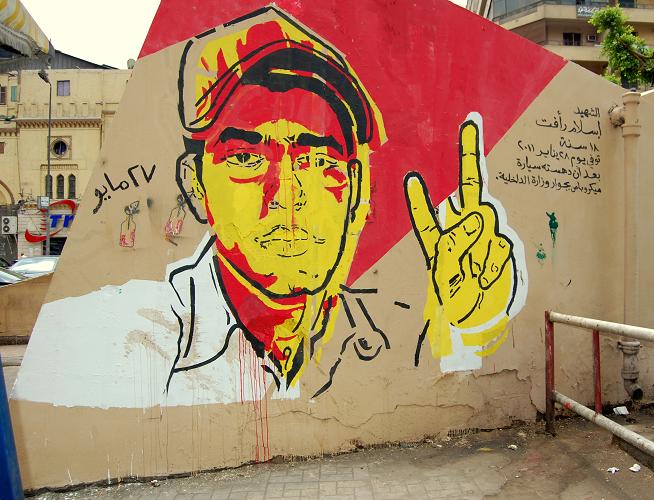While Egypt’s next likely president Abdel Fattah el-Sisi uses state media to paint himself as a hero of his country, a group of street artists in Cairo has not been afraid to use graffiti to tell a narrative opposed to that of Sisi and the government installed by his 2013 military coup.
In the days leading up to the May 26-27 elections, state-run newspaper Youm 7 and close state media allies have accused street artist Ganzeer, whose Martyr Murals brought him to prominence during the 2011 revolution, of association with the Muslim Brotherhood – a claim which it backed with no sources.
The Muslim Brotherhood was labeled as a terrorist organization in December 2013, and those associated with the group have been tried as terrorists, with 529 members supporting ex-president Mohammed Morsi sentenced to death. The military government’s baseless accusation of Ganzeer as an associate of the Brotherhood only serves to further threaten those artists fighting to preserve the self-expression which sparked the 2011 revolution.
This has spurred Ganzeer to ask the question: Who’s Afraid of Art?
In his official response to his accusation, Ganzeer made the answer to his question incredibly clear – it is Sisi’s military government which fears free expression, branding artists as terrorists to silence them, as per his comment below:
“Being anti-Sisi in itself is not a crime. So I guess [media personality Osama Kamal] thought it necessary to attach a fictitious crime to my name.”
This is not the first time that Egypt’s government has tried to attach a crime to artistic expression. Graffiti deemed “offensive” by the government has been legislated against in public space, and Ganzeer was arrested in 2011 by the military regime. In calling out the violence of the military’s rule, including the killing of up to 1,000 protestors in August, 2013 sit-ins widely condemned by both Egyptian and international advocacy organizations.
In the weeks leading up to the election, while Egyptian authorities have stepped up counter-expression measures, artists have shown no sign of stopping their work. This is a sentiment shared by Basma Handy, co-author of Walls of Freedom: Street Art of the Egyptian Revolution:
“It’s well-known political fearmongering. Artists are aware this is happening and are prepared for it. They will continue to express themselves. I don’t believe you can stop them.”

